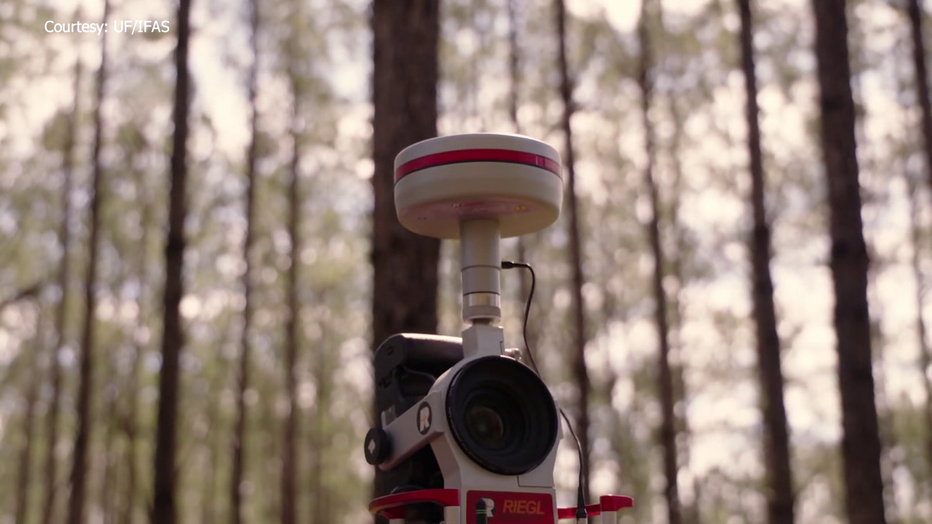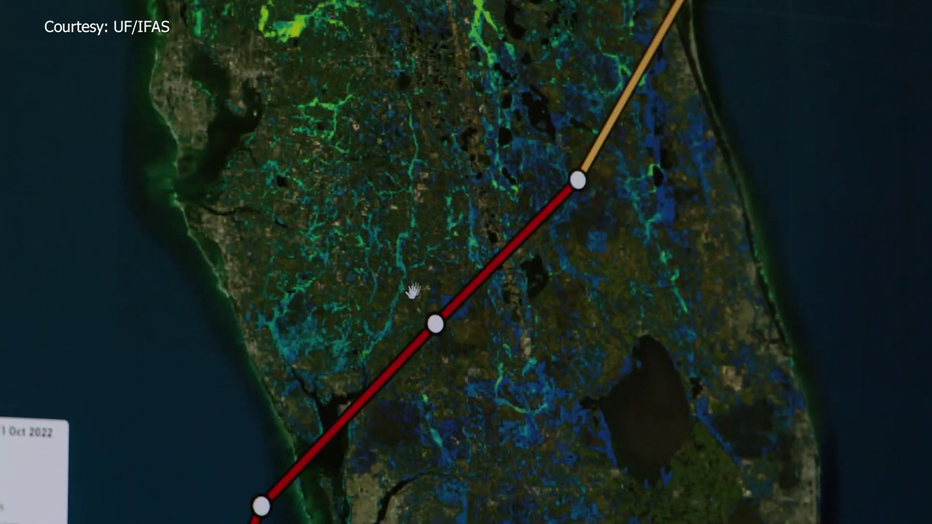AI technology, lasers helping measure damage to forests caused by hurricanes
TAMPA - Researchers with the University of Florida Institute of Food and Agricultural Sciences (UF/IFAS) developed technology using lasers and artificial intelligence to evaluate how extensively forests are damaged during hurricanes.
Dr. Carlos Silva is a UF/IFAS assistant professor of quantitative forest science. He also directs the Forest Biometrics and Remote Sensing Lab.
"Hurricanes pose a fundamental challenge for us in Florida," Silva said. "The traditional way to assess the impact of hurricanes is basically going to the field, establishing plots and measuring trees."
READ: Your guide to hurricane season 2024
That's why Silva and his team wanted to develop a new way to evaluate forest damage faster and more efficiently.
"We are in a new era for monitoring forests, thanks to these innovative remote-sensing and AI methods," he said.
Silva and his lab used NASA satellites to scan trees on the ground using a remote-sensing method called lidar, which stands for Light Detection and Ranging.

Remote sensors collect data by detecting energy that is reflected from Earth. For example, lidar uses a pulsed laser to measure distances.
Silva’s team gathered additional data using lidar scanners attached to backpacks and all-terrain vehicles.
Information from the ground scanners and NASA satellites was used to generate three-dimensional, pre- and post-hurricane maps of forests.\
READ: National Hurricane Preparedness Week 2024 is here: What you need to know
"We combine these two images -- taken of the same exact place -- over each other," Kody Brock, a UF/IFAS researcher in Silva’s lab, told FOX 13.
Researchers then used artificial intelligence to generate an online mapping platform, which shows Hurricane Ian’s impacts on Florida forests.
"As part of this project, we are testing different AI models to develop the maps," Silva said.

Anyone can view the maps online. The team hopes their maps represent a new tool in the toolbox this hurricane season.
"It really has a lot of potential to help people," Brock said.
"Based on the damage severity, they can better plan restoration activities. They can use that data for insurance claims and improve the management decisions that they might need to make after disturbing events, such as a hurricane," Silva said.
SIGN UP: Click here to sign up for the FOX 13 daily newsletter
WATCH FOX 13 NEWS

